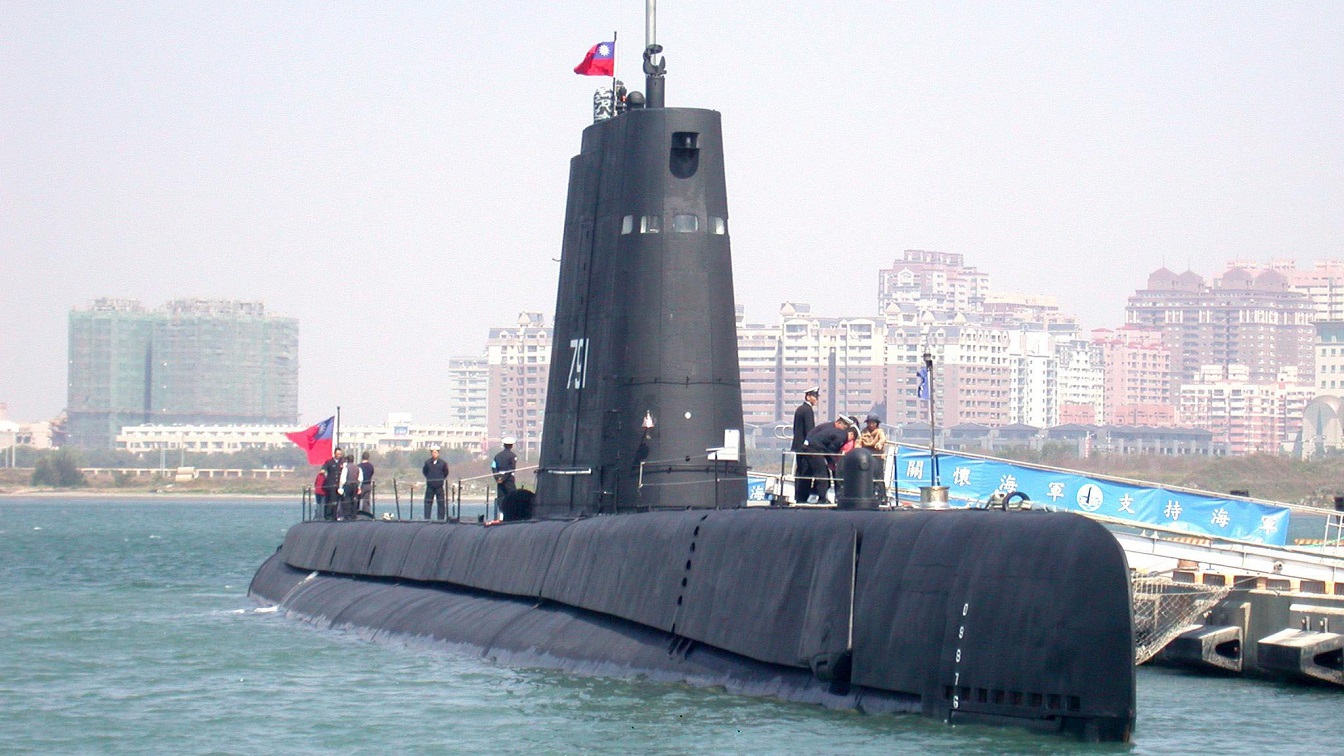Should the People’s Republic of China (PRC) actually do what seems at times “unthinkable” and launch an invasion to bring the self-ruling island of Taiwan under its control forcibly, it would employ its increasingly sizable navy to cross the Taiwan Strait. Currently, the People’s Liberation Army Navy (PLAN) has a force of some 66 submarines, which is expected to grow to 76 by 2030.
China’s expanding submarine fleet is seen as a serious concern in how the island, which has never at any point in its history been ruled by the Chinese Communist Party (CCP), could actually defend itself. It would very much be a “David vs. Goliath” battle, but as any reader of the biblical story certainly knows, David came out on top – using a sling to strike his opponent from a distance.
Taiwan’s Slings – a New Class of Submarine
Currently, Taiwan, formally known as the Republic of China (ROC), has four boats that utilize 20th-century technology, and can only accurately be described as antiquated. Two of those are the world’s oldest operational submarines, dating back to the Second World War.
Its newer submarines, the Chien Lung-class boats SS-793 Hai Lung (Sea Dragon) and SS-794 Hai Hu (Sea Tiger), were purchased from the Netherlands in the 1980s; while its two Hai Shih-class submarines, SS-791 Hai Shih (Sea Lion) and SS-792 Hai Bao (Sea Leopard), were acquired from the U.S. in the 1970s.
Before being transferred to Taiwan and recommissioned as the Hai Shih, the boat was the U.S. Navy submarine USS Cutlass, a 1,570-ton Tench-class boat that was launched on Nov. 5, 1944. Her wartime service in the Pacific was brief, and Cutlass didn’t even reach her first patrol zone near the Kuril Islands until the day after Japan capitulated. The submarine remained in service with the United States Navy throughout much of the Cold War, and was subsequently sold to Taiwan in 1974 and has served as an invasion deterrent since.
These are hardly the proverbial “slings” that Taipei can count on to strike hard at the Goliath that is the PLAN.
Since the 1990s, Taiwan has sought to acquire more advanced submarines to counter the growing threat from the PRC, but no nation dared risk the ire of Beijing. Instead, the island’s military opted to build its own subs. In recent years, Taiwan has stealthily recruited experts and gathered technology from around the world to build a submarine fleet that could be the first line of defense against an invasion armada.
Experts have suggested that the shallow, noisy waters of the Taiwan Strait greatly favor submarines over air and surface (anti-submarine warfare) forces. More importantly, a small flotilla of Taiwanese subs would have the potential to penetrate the PLAN defenses rather easily – making any crossing extremely hazardous and costly.
Build Back Even Better or Risky Venture?
Taiwan has begun construction of a fleet of an eventual eight modern conventionally-powered attack submarines. These would be the first indigenously-developed vessels of their kind, while Taipei even designed and built a new shipyard in Kaohsiung to handle the task. It is estimated that Taiwan’s new attack submarine flotilla could cost a total of US$16 billion; yet, some experts have suggested the money spent by Taipei on the boats is an investment in the nation’s security and even its future.
It was part of President Tsai Ing-wen’s military modernization efforts and the island nation’s self-sufficiency plan. It has been described as a new milestone in the national submarine manufacturing plan. The first of the new class of submarines is now expected to enter service in 2025, and the eight boats will likely replace the Taiwanese Navy’s rapidly aging fleet submarine flotilla.
However, not everyone sees this as a sound plan.
Writing for The Diplomat earlier this month, Holmes Liao called into question whether this is the wisest investment that Taipei could make. He noted that CSBC Corp. – the company charged with building the eight boats – has no past performance manufacturing such vessels. In addition, Liao suggested that Taiwan cannot make many of the critical submarine subsystems, including the periscope, sonar, or propulsion systems, and as a result, the unit price tag of each diesel-electric sub is twice as much as comparable subs and not too far behind that of the U.S. Virginia-class nuclear attack submarine.
Another consideration is whether eight submarines – which are being built to hunt for PLAN warships – would be enough to close the gap when the PRC will have 76 submarines. Those eight subs won’t be able to do much hunting if they have to fend off enemy submarines. Then there is the lesson from the war in Ukraine, where the Ukrainians successfully sank the powerful flagship of the Russian Black Sea fleet despite having no navy.
Taiwan’s eight future submarines could certainly do significant damage to a PLAN invasion force, but perhaps spending the money on anti-ship missiles might prove to be a better sling to slay Goliath on the open waters.
A Senior Editor for 1945, Peter Suciu is a Michigan-based writer who has contributed to more than four dozen magazines, newspapers, and websites with over 3,000 published pieces over a twenty-year career in journalism. He regularly writes about military hardware, firearms history, cybersecurity, and international affairs. Peter is also a Contributing Writer for Forbes. You can follow him on Twitter: @PeterSuciu.

